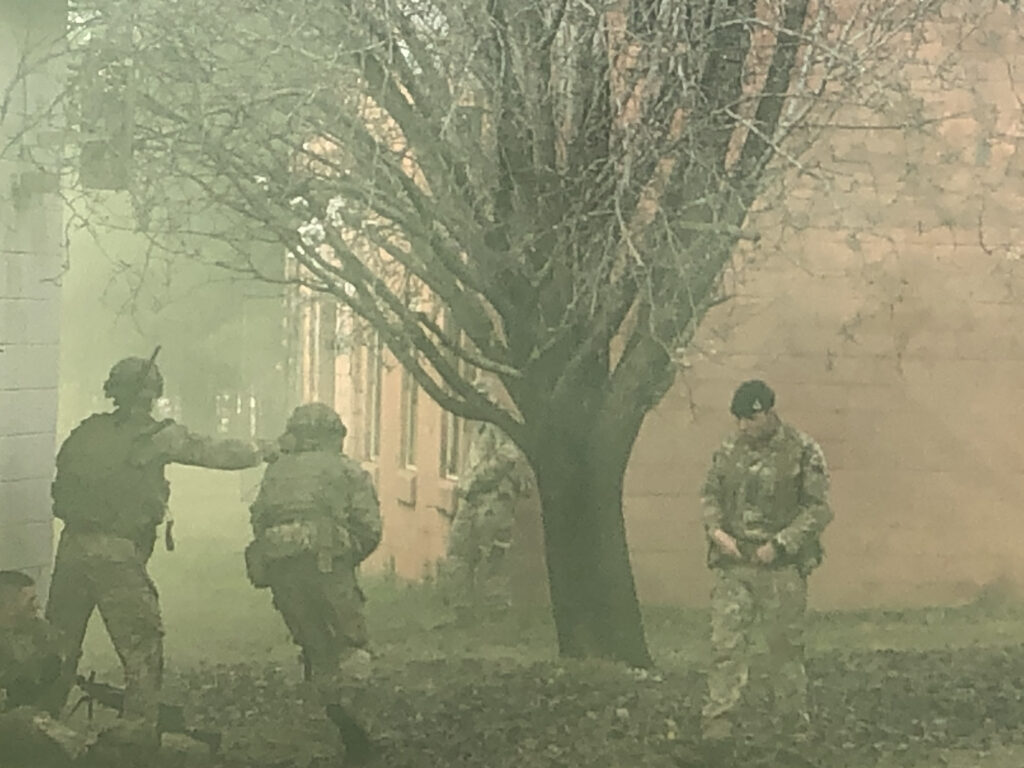By SYDNEY J. FREEDBERG JR
 WASHINGTON: As the Army rebuilds its long-neglected electronic warfare arm, it’s finding simple tools can have a big impact – at the right place and time.
WASHINGTON: As the Army rebuilds its long-neglected electronic warfare arm, it’s finding simple tools can have a big impact – at the right place and time.While EW is best known for disrupting radio and radar, recent wargames at Fort Benning showed tremendous tactical value to simply detecting hostile transmissions. EW troops following behind the frontline infantry used portable sensors to detect “enemy” units’ transmissions a kilometer or more away, long before regular soldiers could see them.
“It provides that ground force commander early warning,” said Capt. Bryan McCoskey, Fort Benning’s liaison office from the Army’s Cyber Center. “It gives him more time to make those tactical decisions … than ‘I’m walking thru the woods and I just received contact 300 meters away’” after the enemy opened fire.
That early warning lets the infantry fly a drone to confirm the report, get into prime position for any infantry attack, or artillery Maj. Joe Tague told me, “call up a fire mission and destroy the enemy entirely… before the mission has even started.”
The experiment was part of Fort Benning’s annual Army Expeditionary Warrior Experiment (AEWE), for which Tague is the senior uniformed officer. Benning, the Army’s center for armor, infantry, and scouts, has previously gotten tech support for its tactical networks from the Army’s Cyber Center at Fort Gordon, on the other side of Georgia. But this is the first time the Cyber Center has sent a tactical EW detachment, combining part of its own Cyber Quest exercise with Benning’s AEWE.
The Cyber Center’s eight-soldier detachment brought two types of radio-frequency sensors. One is mounted on a small drone (what the military calls a Group II UAS). While the Army wouldn’t reveal the exact model, it’s capable of launching from a few hundred feet of dirt runway. The drone has longer endurance than the smaller, hand-launched Ravens and Pumas in widespread Army service today. Once it gets aloft, it can see above ground clutter and detect transmissions much more easily than ground level sensors.
But you can’t always count on drones being available, especially in bad weather or against an enemy with extensive anti-aircraft defenses. So the Cyber Center also brought ground-based sensors. This system can be carried by a pair of soldiers on foot and run off portable batteries, or it can be hooked up to a vehicle – in this exercise, ordinary pickup trucks – and operated off the vehicle’s battery.
Now, the Cyber Center didn’t just bring tools for the good guys in the wargame. It also gave some gadgets to the Fort Benning soldiers playing the enemy, aka the Opposing Force (OPFOR). They got multiple radio decoys, designed to give off misleading signals and to draw attention away from the real OPFOR. They also got a pair of advanced tactical radios capable of LPD/LPI transmissions – Low Probability of Detection/Low Probability of Intercept – to allow them to communicate without being so easily spotted.
Despite these countermeasures, the Cyber Center’s sensors proved effective tactical additions – and the additional information and the tactical possibilities it created tested infantry leaders in new ways. Cyber/electronic warfare adds a new dimension to the battlefield beyond the traditional physical cues troops are trained on, which ties into the military’s emerging concept of multi-domain or all-domain warfare, said Mark Winstead, a retired Army officer turned civil servant who oversees AEWE.
“That’s another domain that platoon leaders, platoon sergeants, squad leaders, company commanders in the maneuver force are learning to utilize,” Winstead told me. “They’re swimming in multiple currents right now.”
No comments:
Post a Comment